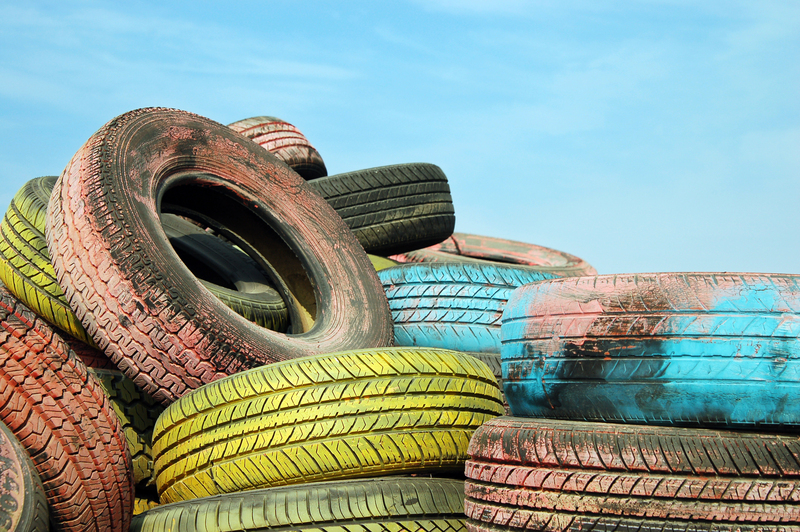Guide to Slashing Waste and Boosting Sustainability at Home
Are you looking to create a greener, cleaner, and more sustainable living environment? Embracing effective strategies to minimize waste and adopt sustainable practices in your home not only benefits the planet -- it also adds value to your life, saves money, and sets a positive example for others. In this comprehensive guide, we'll show you practical, actionable steps to slash waste and supercharge sustainability at home. Whether you live in a sprawling house or compact apartment, you can make significant changes that have a big impact.
Why is Reducing Waste and Boosting Sustainability at Home Important?
Household waste contributes significantly to environmental challenges like overflowing landfills, increased greenhouse gas emissions, and depletion of natural resources. By actively reducing your waste and making your home more eco-friendly, you help curb pollution, conserve energy, and promote a healthier community. It's not just about saving the planet -- it's about fostering a lifestyle that is smarter, more efficient, and future-focused.

Understanding Waste and Your Household's Environmental Footprint
Before we dive into strategies, it's crucial to understand what types of waste your home produces. The main categories include:
- Organic Waste (food scraps, yard trimmings)
- Recyclables (paper, glass, metal, certain plastics)
- Non-recyclables (styrofoam, some plastics, contaminated packaging)
- Hazardous Waste (electronics, batteries, chemicals)
- Textile Waste (clothing, linens, shoes)
Each type of waste requires different handling and offers unique opportunities for sustainability at home. An initial waste audit can help you pinpoint where most of your household waste originates and where to start making changes.
Slash Waste and Boost Sustainability at Home: Step-by-Step Strategies
1. Adopt Waste-Reducing Shopping Habits
One of the primary sources of household waste is overconsumption and packaging from shopping. Employ these waste-reducing strategies on your next trip:
- Bring reusable bags, containers, and produce sacks to the store
- Buy in bulk to minimize packaging waste
- Choose products with recyclable or compostable packaging
- Plan your meals to avoid food waste and overbuying
- Select high-quality, long-lasting products rather than disposables
Tip: Shop local farmers markets to avoid excess packaging and support local growers.
2. Compost Organic Waste
Composting is a powerful way to slash organic waste in your household and create rich, natural fertilizer for your garden or houseplants. Compostable items include:
- Fruit and vegetable peels
- Coffee grounds and filters
- Eggshells
- Yard trimmings and leaves
- Unbleached paper towels and napkins
Getting started:
- Choose a compost bin suited to your space (outdoor tumbler/bin, indoor countertop composter, or worm composting for apartments)
- Add a balanced mix of green (nitrogen-rich) and brown (carbon-rich) waste
- Keep moist and turn regularly to aerate
- Within a few months, you'll have a nutrient-rich compost to use in your garden!
3. Recycle Right with Clarity
Effective recycling at home goes beyond tossing items in the blue bin. Many people end up "wish-cycling" (putting non-recyclable items in the bin, hoping they'll be recycled).
- Clean items before recycling to prevent contamination
- Check local recycling guidelines -- rules vary by municipality
- Recycle only accepted plastics (usually #1 and #2)
- Flatten cardboard boxes to save space
When in doubt, look up your local recycling authority's guide!
4. Cut Down on Single-Use Items
Single-use plastics and disposables contribute enormously to household waste. To boost sustainability in your home:
- Replace paper towels with reusable cloths or microfiber linens
- Switch to bamboo or metal straws
- Use refillable water bottles and coffee mugs
- Opt for beeswax wraps instead of plastic wrap
- Store leftovers in glass containers
Small swaps add up and soon become second nature!
5. Embrace Energy-Efficient Living
Sustainable homes aren't just about waste - they're about responsible resource use. Adopting energy-saving habits will further decrease your environmental impact.
- Unplug devices when not in use
- Switch to LED bulbs and smart thermostats
- Seal drafts, insulate windows, and use weather-stripping
- Wash clothes in cold water and line-dry when possible
- Run appliances only with full loads
Bonus: Lower energy usage means savings on utility bills!
6. Reduce Water Waste
Conserving water is crucial for sustainability at home. Try these methods:
- Fix leaks promptly (drips can waste thousands of gallons per year!)
- Install low-flow showerheads and faucet aerators
- Collect rainwater for gardening
- Turn off the tap while brushing teeth or shaving
- Use drought-resistant plants in landscaping
7. Make Laundry and Cleaning More Sustainable
Many household cleaners and laundry supplies come in plastic packaging or contain harsh chemicals. For a lower-waste and eco-friendly home:
- Make your own cleaning products using vinegar, baking soda, and lemon
- Buy powdered or concentrated detergents in cardboard packaging
- Choose washable mop heads and cleaning cloths
- Use biodegradable sponges and brushes
8. Upcycle, Donate, and Reuse
Before discarding items, ask yourself: Can this be used differently, repaired, or passed on? Upcycling is not only creative but also highly sustainable.
- Repurpose glass jars as storage containers
- Turn old t-shirts into cleaning rags
- Revamp furniture with a fresh coat of eco-friendly paint
- Donate clothes, electronics, and household goods to charity
Remember: Reuse is even better than recycling when slashing waste at home!
9. Shop Secondhand and Sustainably
The most sustainable item is the one that already exists. Shopping for pre-loved goods prevents waste and reduces demand for new manufacturing. Explore:
- Thrift stores, consignment shops, and vintage markets
- Online platforms for used items
- Local "buy nothing" groups or community swaps
When you do need something new, opt for products made from recycled or responsibly sourced materials, and those with minimal or compostable packaging.
10. Educate and Involve Your Household
Sustainable living is most effective when everyone's involved. Talk to your family or housemates, set goals, and celebrate milestones together. Activities include:
- Describing why slashing waste at home matters
- Creating fun challenges (e.g., "zero food waste week")
- Setting up a recycling and composting station that's easy to use
- Sharing how-to info on sustainable habits
Next-Level Sustainability: Advanced Tips for the Committed Home
Invest in Renewable Energy
If possible, invest in solar panels or green power tariffs from your local energy provider. Even small changes, like using solar chargers or wind-powered outdoor lights, boost your home's sustainability.
Set Up a Rainwater Harvesting System
Collecting rainwater can keep your plants hydrated and reduce reliance on municipal water. Simple rain barrels are inexpensive and hugely effective.
Consider a Home Garden
Growing even a few herbs, vegetables, or pollinator-friendly flowers at home helps reduce food miles and supports local biodiversity.
Look for Certifications and Eco-Labels
When you do buy, seek products with certifications like Energy Star, Fair Trade, FSC, or USDA Organic. These labels indicate better environmental and ethical standards.
Overcoming Common Challenges to Sustainable Living
Worried about time, space, or cost? Many sustainable choices are easier, more affordable, and take up less space than you may think. Tip: Start with just 1-2 areas of change, and build from there.
- Busy schedule? Choose one sustainable swap to make each month.
- Small apartment? Try under-sink compost bins or vertical herb gardens!
- Limited budget? Focus on reusing, buying secondhand, and making homemade cleaners.
Remember, every step counts. Your actions inspire others and create a ripple effect in your community!

Measuring Your Progress and Staying Motivated
Tracking your home waste reduction and sustainability improvements keeps motivation high. Options include:
- Counting how many bags of trash you send to landfill monthly
- Monitoring your utility bills for drops in water and energy use
- Tracking compost output and garden yields
- Reviewing before-and-after photos of your sustainable home changes
Celebrate every success. Even "small wins" add up -- like remembering your reusable coffee cup or reorganizing your recycling system!
Conclusion: Start Slashing Waste and Elevate Your Sustainable Home Today!
Transforming your home into a low-waste, sustainable haven is within reach. With conscious choices and simple strategies, you'll not only reduce your waste and carbon footprint but also foster a healthier, more mindful lifestyle for yourself and your loved ones. Start small, keep learning, and take pride in every step toward a greener, better future.
Are you ready to slash waste and boost sustainability at home? Share your tips and triumphs in the comments below and inspire others to join the movement!